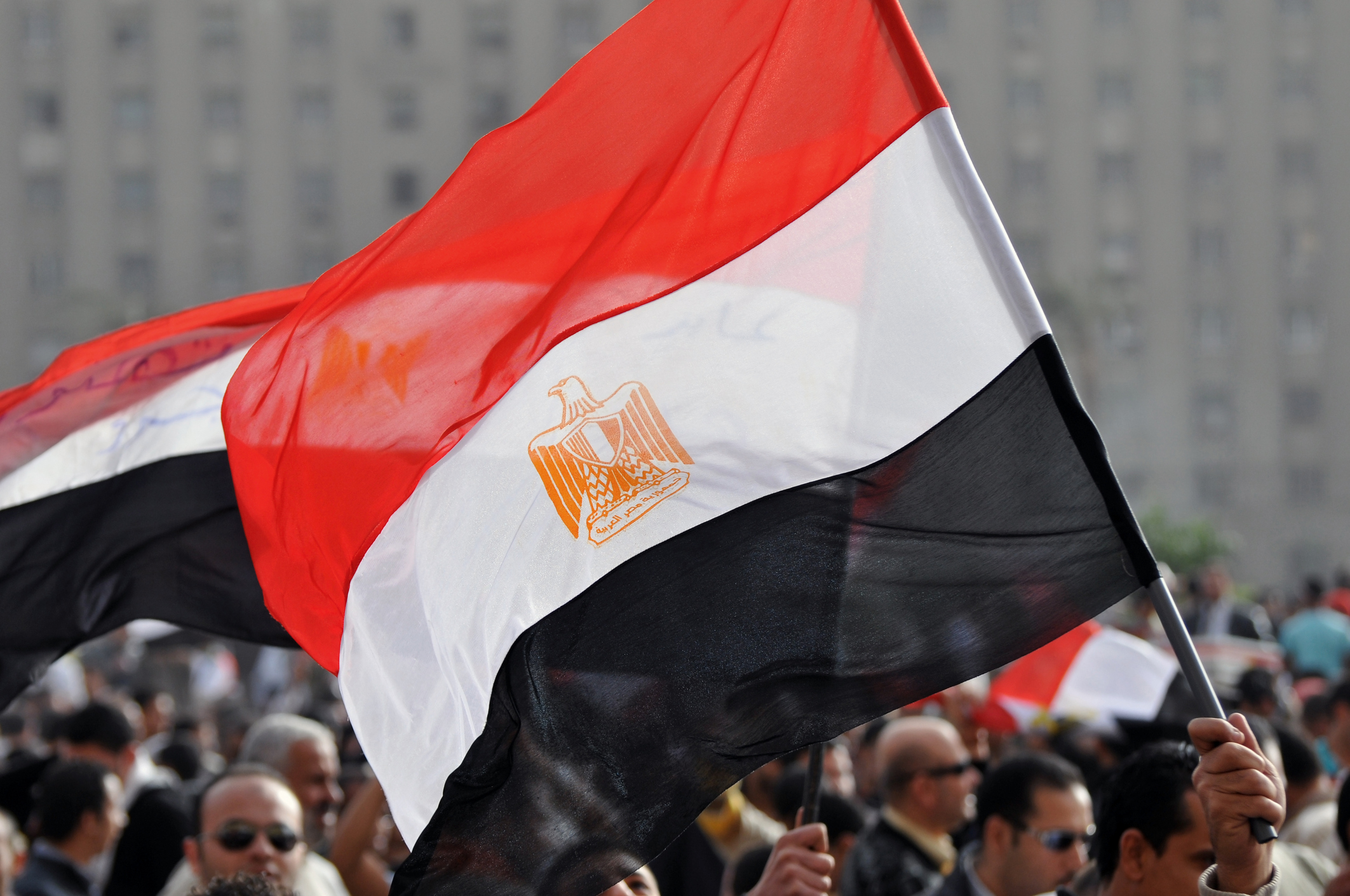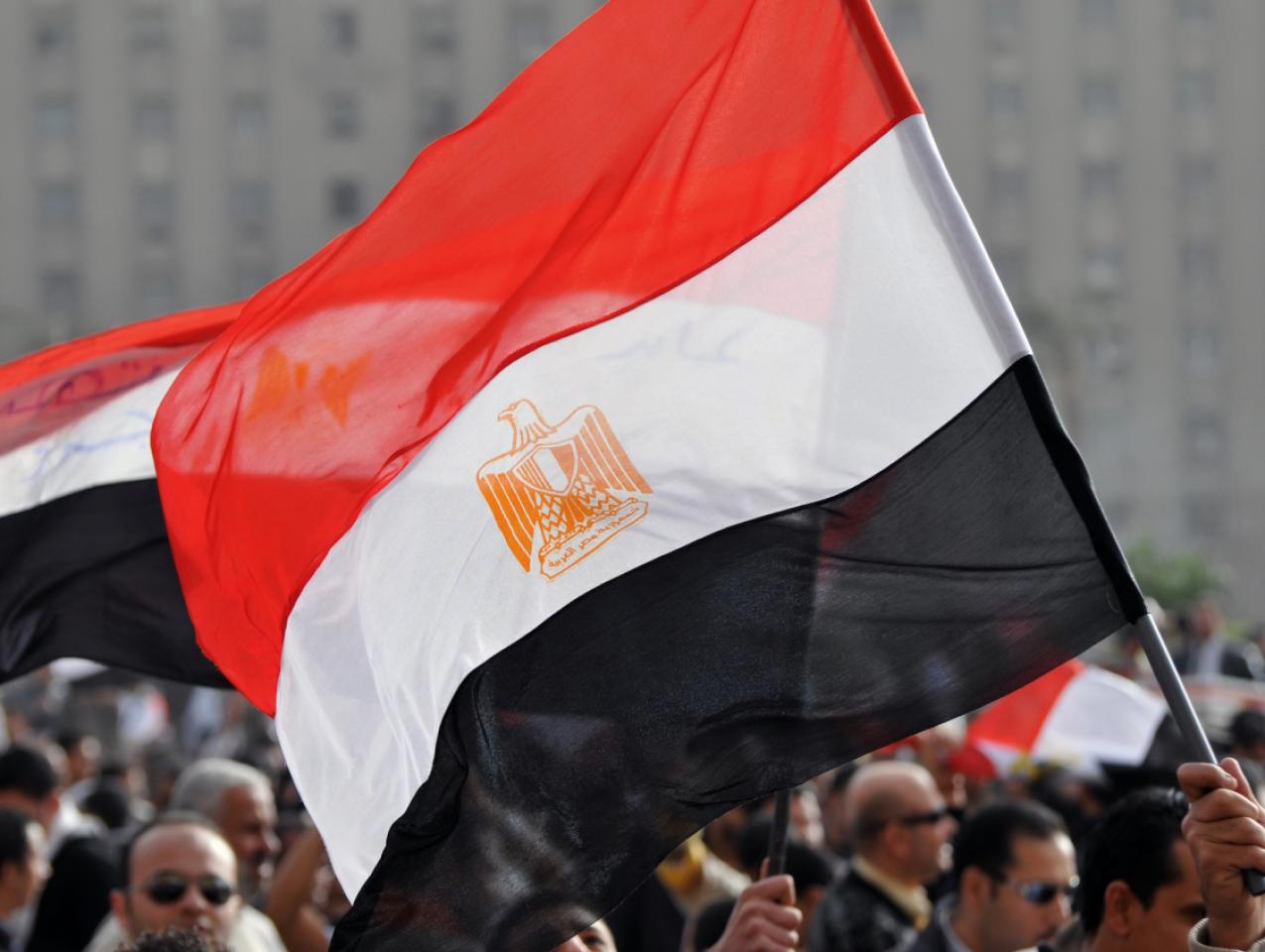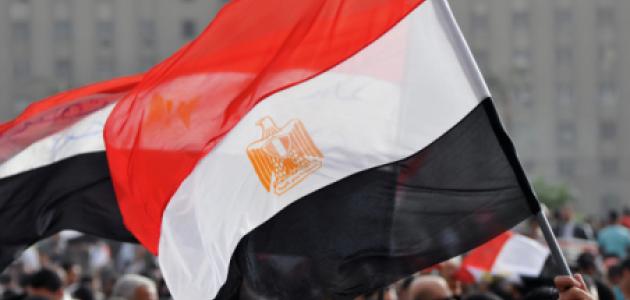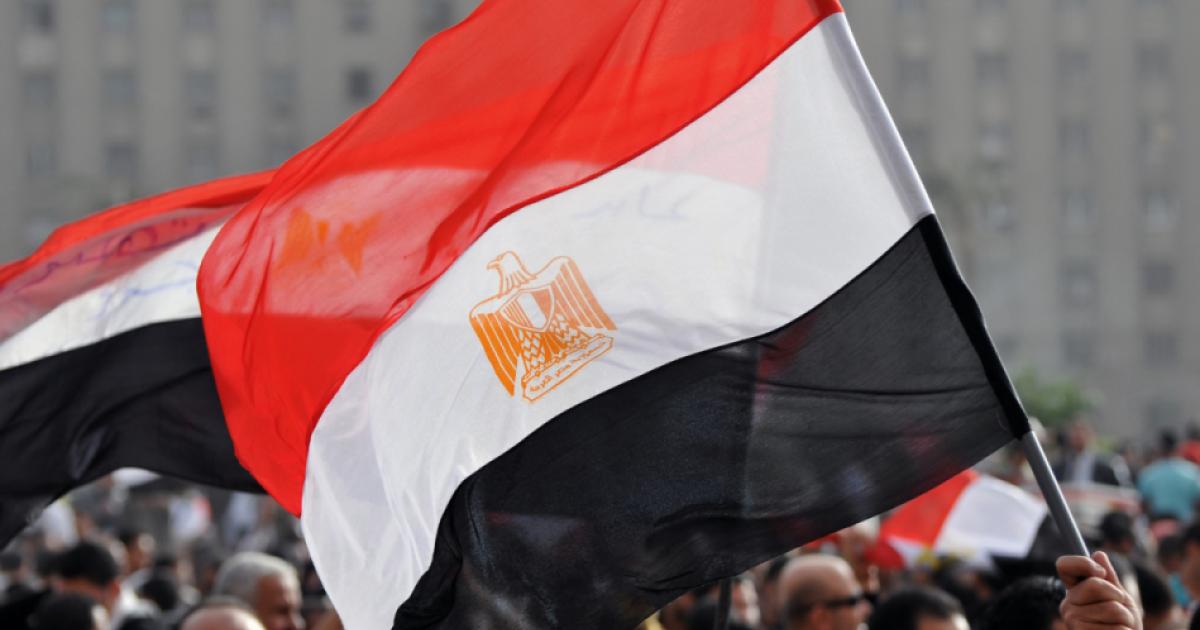Introduction
The last ten years have seen forms of political disruption within Egypt that were virtually unimaginable a decade ago—from the 2011 protest uprisings; the 2012 election of Muslim Brotherhood candidate Mohammed Morsi to the Egyptian presidency; the 2013 coup d’état which unseated Morsi; and the 2014 formal assumption of power by current Egyptian president Abdel Fattah al-Sisi, Egypt has witnessed a period of staggering political change. Few analysts would disagree with the statement that demographic circumstances and technological developments played a crucial role in sparking and sustaining the popular movement that set this chain of events into motion.
Yet for all of the political change that has taken place, the last ten years have also witnessed important forms of continuity. From an institutional perspective, Egypt remains an autocracy with a political regime undergirded by a powerful, economically-influential military. And from a demographic perspective, many of the same challenges that Egypt faced a decade ago—like a large youth population struggling with relatively high rates of unemployment—continue to be relevant concerns today. Given these forms of change and stasis, where is Egypt heading? While it is impossible to know with any degree of certainty, I will identify some relevant developments that are likely to impact Egypt in the future. In this paper, I discuss trends in autocratic stabilization, the demographic outlook, the challenge of training and finding employment for the country’s large youth population, population-level health challenges—like obesity-related diseases and Hepatitis C prevalence—as well as how climate change and insecurity of water resources are complicating all of these concerns.
Stabilizing Autocracy in Egypt
Building on Samuel Huntington’s concept of a “veto” coup, scholars have argued the overthrow of Egypt’s first (and only) democratically-elected president, Mohammed Morsi, in June of 2013 constituted a “popular-participatory veto coup.”1 Concerned about Morsi’s attempts to usurp political power and damage the independence of the judiciary, liberal activists called for popular demonstrations against the president.2 Ordinary Egyptians, emboldened by the efficacy that they felt in the wake of the 2011 protest uprisings, went back to the streets to express their disapproval of the perceived power grab by Morsi and the Muslim Brotherhood.
In the years since Morsi’s overthrow, Egypt has witnessed increasingly autocratic tendencies under the leadership of President al-Sisi. Al-Sisi has given Egypt’s interior ministry free hand in perpetrating widespread abuses, including arbitrary arrests and torture against perceived dissidents, in a bid to create political stability.3 The Egyptian police have forcibly disappeared citizens leaving no legal trace of their whereabouts, using tactics more brutal and repressive than those witnessed under Mubarak.4 Alleged members and sympathizers of the Muslim Brotherhood have been particularly targeted, leading Brotherhood activists to be jailed and the group’s social service activity significantly reduced.
Supporters of al-Sisi would say that Egypt requires a “strong hand” in order for the state to consolidate political control, impose stability and improve the country’s economic growth.5 Defenders of such an approach argue that repression is the only way to avoid losing political control and that al-Sisi has been highly successful at stabilizing the country.6 Egyptians were particularly troubled by high levels of violent crime and social instability that took place in the immediate aftermath of the 2011 protest uprisings.7 Public insecurity led to a palpable increase in public anxiety as Egyptians became increasingly vulnerable to car jackings, robbery and violent crimes. And although al-Sisi has brought forms of public stability to the country, he does not garner high levels of loyalty among Egyptians, many of whom disapprove of his repressive tactics.8 From a rhetorical perspective, al-Sisi engages in continual fearmongering, threatening that the chaos in regional neighbors like Libya, Syria, and Yemen could come to Egypt.9
Egyptians enjoy fewer personal freedoms today than compared to the Mubarak period. Thousands of Egyptian bloggers, journalists and political activists have been jailed; websites have been banned and the media is under strict control. A law signed in August of 2018 tightened government control of the internet, putting thousands of social media accounts under government surveillance.10 Al-Sisi has relied on external actors, including Gulf states, to support his increasingly authoritarian policies. A counterrevolutionary bloc of states across the Arab world—including Egypt, Saudi Arabia, and the UAE—has doubled down on authoritarianism.11
In recent years, al-Sisi has also consolidated forms of personal power, including through moves to exert more direct executive branch control over the judiciary.12 Are there any institutions that can serve as a political counterweight to al-Sisi? Opposition and civil society leaders have been completely muzzled and most Islamist activists are in jail or exile. In fact, thousands of Egyptians have expatriated for political reasons, fearful of court convictions, lawsuits, attacks in the media, and the threat of physical attack.13 And the Egyptians who have left represent all walks of political life, including leftists and liberals as well as Islamists.14 The Egyptian legislature has never been a particularly effective counterweight to the executive; this is even more so the case today than in the past. In February of 2019, the Egyptian parliament endorsed a process to hold a referendum likely to allow al-Sisi to extend his rule until 2034, further entrenching his personal rule and military rule in Egypt, more generally.15
The Demographic Situation
Political stability in Egypt is a function of a complex set of factors, not all of which are in the hands of the government or the opposition. In particular, demographic changes and economic trends continue to evolve in ways that have the potential to increase unrest. Economists have argued that a combination of an increasingly educated youth population combined with a lack of high-quality job opportunities together created the conditions for the 2011 uprisings.16 These demographic burdens and challenges were salient in Egypt and other Middle Eastern countries. Similar conditions may also be influencing recent protest movements in Algeria and Sudan, which some analysts view as a continuation of the 2011 region-wide uprisings.17
Egypt’s current population is approximately 100 million and if current demographic trends continue, Egypt will have a population of 150 million by 2050.18 In addition, Egypt’s large population is youthful. Approximately 61 percent of the population is under the age of 30, and 40 percent is between the ages of 10 and 29.19 While it is easy to imagine that the status quo demographic conditions are unsustainable, it is impossible to predict with any accuracy the conditions under which these structural conditions pass a threshold from stability to instability. Egypt’s main statistical agency, the Central Agency for Public Mobilization and Statistics (CAPMAS), has said that the youth population boom constitutes a threat to national security, constituting a problem more serious than domestic terrorism.20 It is rumored that Egyptian President Abdel-Fattah al-Sisi is fearful of millennials, as a demographic group.21
Egypt’s current demographic situation was far from inevitable. In fact, Egypt implemented a set of family planning policies between the 1970s and the 2000s that successfully slowed the growth in family size. Fertility rates began increasing in the years leading up to 2011, however, as a result of a relaxation of family planning policies.22 Political instability may have also influenced implementation of population-related policies. Egypt witnessed a spike in births after the 2011 uprisings. While we cannot know the precise cause, Egyptians were optimistic about the future for the months following the resignation of Mubarak, perhaps impacting population growth rates.23 The largest year-on-year population surge, however, was in the year after the Muslim Brotherhood came to power; some analysts have suggested that the Brotherhood may have undermined population control efforts while in office.24 Al-Sisi’s campaign against international NGOs has led foreign family planning providers to leave Egypt.25 While NGOs provided 10 percent of all contraceptives in Egypt in 1995, that figure fell to less than 1 percent in 2016; overall contraceptive availability has also declined significantly over time.26
As Egypt’s population has increased, growth has put a strain on infrastructure. A February 2019 train accident at Cairo’s main station killed 25 people and pointed to the vulnerabilities associated with transportation infrastructure. There is also a sense that the regime lacks the financial resources and political will to make the necessary updates to Cairo’s roads, rails, housing stock, and water systems. Indeed, al-Sisi has taken the lead in overseeing the construction of Egypt’s “New Administrative Capital,” which is to be located 50 miles from downtown Cairo and will serve as the country’s new seat of bureaucracy.27 A relatively remote, newly-constructed capital city obviates the need to upgrade Cairo’s infrastructure, while simultaneously insulating the government from existing urban populations that have shown a willingness to engage in protest mobilization.
Employment, Education, and Technology
Egypt is a lower-middle income country with an economy that blends aspects of a market economy with state planning and centralization. Although Egypt has seen relatively robust economic growth (typically hovering between 3 and 5 percent), the gains for growth have not kept pace with the country’s many challenges, particularly the growing youth population. There are 700,000 new entrants into the labor force each year on top of large numbers of already unemployed youth.28 According to CAPMAS, only about 50 percent of young adults between the ages of 18 and 29 are employed, and almost 40 percent of unemployed young adults hold university degrees.29
Much can be learned about the state of Egypt’s youth through analysis of the Survey of Young People in Egypt (SYPE), conducted by Cairo’s Population Council. The 2013/2014 SYPE is a nationally-representative sample of almost 11,000 young people aged 13–35. The SYPE, which examines issues from educational disparities to employment patterns to gender attitudes, is one of the largest surveys of young people in the Middle East and North Africa. Data from the 2013/2014 SYPE suggests that 10 percent of the sample has never received any formal education; another 25 percent is currently attending school. For the 75 percent of the sample not currently in school, respondents were asked if they were “employed during the past seven days.” For these non-students, about 40 percent said that they worked in the last seven days while 60 percent said that they did not. The vast majority who worked said that they had been on the job 5, 6, or 7 days during the past week. The majority of those who were working—about 70 percent—said that their job did not require any skill at all. Interestingly, the skill required for these jobs did not vary significantly across respondents with vastly different education levels. In other words, the returns to education seem small since respondents with a general primary education and those with a university degree report similar levels of skill required for their jobs. Fewer than 10 percent of respondents said that they use a computer for work.
Respondents who were not working were asked why they were unemployed. Almost 60 percent said that there was no work available at all for them. Another 20 percent said that there was no suitable work given their experience and degree or at a suitable organization or firm. Given the stigma associated with blue collar jobs for the college educated, this is perhaps unsurprising. Young people in the Middle East and North Africa often spend years searching for jobs before finding work, delaying transitions to adulthood, including marriage and home ownership. Lack of access to credit means that youth, who have limited credit histories and collateral, are also disadvantaged if they want to start small businesses.30
While countries in the Middle East and North Africa have tried to reduce levels of youth unemployment, most countries have prioritized security concerns over the problems of young people.31 Researchers point to a variety of factors contributing to labor market pressures, including weak educational systems; lack of labor market planning resources; and a mismatch of expectations between educated job seekers and the prestige of available jobs.32 Only 20 percent of Egyptians think that the country’s economic situation is good, and fewer than 30 percent of Egyptians believe that the country’s children will be better off than their parents.33
Because Egyptians lack optimism about the future, many young people have sought to emigrate to Europe, often undertaking dangerous trips by boat across the Mediterranean. When SYPE respondents were asked what issues made them want to leave Egypt, more than 90 percent stated that the lack of job opportunities was encouraging them to emigrate. In addition to “push” factors, young Egyptians are also lured by the promise of better circumstances in Europe. For example, viral videos of Egyptians thriving in Italy make the rounds on social media in Egypt, encouraging others to migrate. Photos of young men with Italian girlfriends, sporting expensive clothing and shoes, circulate to friends and relatives, leading some villages to be emptied of young men.34
Although Egypt is a lower-middle income country, it is one that has been impacted tremendously by new technologies, especially since its youthful population has been very willing to take up new technological developments. Egyptian young adults make widespread use of technology with almost 90 percent using mobile phones and almost fifty percent using computers and the internet.35 While some of these advances in individual technological capability have been fueled by advances in education within Egypt, many of the gains in ability to access technology are related to personal efforts at training and expertise development.
A great deal of attention has focused on the role social media played in the 2011 uprisings, from shaping political debates to mobilizing events on the ground to spreading democratic ideas.36 Analysts have suggested that the 2011 uprisings may have had a subsequent feedback effect on technological innovation and the entrepreneurial start-up scene in Egypt.37 In recent years, Egyptian companies have innovated successfully in artificial intelligence (AI). For example, the Egyptian startup, Affectiva, uses AI to recognize human emotions with the goal of creating wearable devices for autistic children.38
Under the right circumstances, Egypt’s large, technologically-savvy working-age population could propel the country forward. But without the right investments in youth health and education, as well as opportunities for suitable employment, Egypt’s economic future will be limited. Nowhere are these investments a bigger challenge than in the educational domain. For example, Egyptian classroom densities are commonly in excess of one hundred students, and a large percentage of eighth grade students do not meet basic literacy standards.39
Economists who have explored these issues in great depth suggest that Egypt’s crisis of youth opportunity relates specifically to the lack of upward mobility for middle-class Egyptians.40 While overall measures of inequality of opportunity may have declined in Egypt over time, the fortunes of those born into the middle class have become increasingly similar to those born into lower-class families. In other words, the gap between the middle class and lower class has narrowed while the upper classes have pulled ahead of both. Middle-class Egyptians are about 40 percent of the total population and represent those families that have made the biggest investments in education and human capital development over recent years only to lose ground from an economic perspective.41
Population-Level Health Challenges
Egypt struggles with serious population-level health problems which will increase the burden for economically-productive members of society. These health problems include the world’s highest obesity rates in addition to the highest global rates of Hepatitis C infection. Both issues have been publicly flagged by President al-Sisi, who has stated that Hepatitis C and chronic diseases were major threats to the health of the Egyptian people. In December of 2018, al-Sisi went on a 20-minute televised rant, criticizing Egyptians for overeating and not walking enough.42
Studies have suggested that about 19 million Egyptians are obese, accounting for about 35 percent of the adult population. In addition, about 3.6 million Egyptian children are obese, accounting for 10 percent of the country’s children. Chronic disease screenings also indicate high numbers of obesity-related disease including 5.3 million diabetes patients and another 3.6 million hypertension patients.43 Egyptians tend to consume relatively large quantities of low-quality foods in their diets. For example, a favorite, economical meal for Egyptians is koshary, a dish made of rice, macaroni, and lentils covered with tomato sauce and fried onions. Wealthy Egyptians also enjoy fast foods, seen as a status food item. Egyptians, both rich and poor, enjoy sweet beverages including sugared tea and soft drinks.
Parallel to the obesity epidemic, Egypt is also struggling with high rates of Hepatitis C infection. Hepatitis C is typically transmitted through contact with contaminated blood, especially through shared needles. Millions of Egyptians contracted Hepatitis C when the Egyptian government undertook a campaign to treat schistosomiasis, a parasitic disease associated with Nile water snails. Because health workers frequently used unclean needles for schistosomiasis treatment, at least 10 percent of Egypt’s population came to be infected with Hepatitis C.44 In addition, an estimated 150,000 Egyptians are newly infected every year, and each infected Egyptian typically passes the disease on to three others.45
About one-third of Egypt’s national health budget is spent on Hepatitis C treatment.46 These efforts have enjoyed some success at stemming the negative effects of the disease. In 2014, the Egyptian government rolled out an online portal for people to register for treatment, and in the last few years, more than 1.6 million Egyptians have received Hepatitis C treatment.47 The Egyptian government has been working with Gilead Sciences to offer Hepatitis C treatment in Egypt at a fraction of what it costs in the United States.48 In addition, in 2017 Egypt’s Ministry of Health also initiated a new nationwide screening program for Hepatitis C.49 The government’s ability to make tangible progress on Hepatitis C treatment is encouraging and suggests the state has the capacity to implement large-scale social interventions under the right conditions.
Natural Resources and Climate Change
The many challenges that Egypt faces related to demographics, the economy, and public health have the potential to become exacerbated by new developments related to the environment. For example, water scarcity continues to be a major issue for Egypt, which depends almost entirely on the Nile River for the country’s water resources. According to some analysts, Egypt is on track to reach a threshold of “absolute water scarcity” by 2030.50 Climate changes, particularly higher temperatures, are expected to shorten growing seasons and reduce agricultural yields in Egypt.51 Large amounts of water are also lost through evaporation every year, something that climate change will make worse.52 This is not to mention pollution damage to the Nile, which is widespread.53
Climate change is also associated with rising sea levels that have the potential to damage Egypt’s ecological situation. For example, the Nile River Delta is eroding, in some cases by as much as 10 meters a year, reducing available agricultural land.54 Arable farmland continues to decrease, making it increasingly difficult for Egyptian farmers to produce enough food for the growing population.55 Alexandria—Egypt’s second largest city—is on the front lines of rising sea levels; even a relatively modest increase in sea levels will destroy the city’s beaches entirely, while low-lying areas will be inundated with sea water.56 Seeping saltwater also has the potential to lead buildings to collapse.57 Climate related displacement has forced Egypt’s growing population to live on a smaller and smaller footprint. It is often Egypt’s poorest who live in low-lying areas and are being most impacted by these negative externalities of climate change.58
Disputes over Nile River rights also have the potential to disrupt Egypt’s water resources. Ethiopia is currently constructing the “Grand Renaissance Dam,” described as Africa’s largest dam project. Disruptions to the Nile flow associated with the dam could increase scarcity at a time when Egypt is witnessing significant population growth. What is at stake should Egypt witness disruption to the water supply, disrupting agricultural production? Any interruption to the Egypt’s agricultural food supply has the potential to be extremely destabilizing. In March of 2017, there were bread riots across Egypt with demonstrators blocking roads and clashing with security forces in poor localities in Alexandria, Kafr al-Shaykh, Minya and Assyut.59 Egypt is the world’s largest wheat importer and state-subsidized bread has long been an important part of the Egyptian diet.
One potential bright spot relates to new natural gas discoveries in the eastern Mediterranean that might provide much-needed cash to support Egypt’s limping economy. The Zohr gas field is the largest ever natural gas find in the Mediterranean, doubling Egypt’s reserves.60 And although Egypt’s gas exports are still a trickle, al-Sisi has publicly stated that his dream is make Egypt a regional hub for energy in the future.61 Egypt’s location close to major European markets is thought to be particularly favorable given Europe’s increasing gas use.62 Whether Egypt will be able to productively invest revenue from the natural gas windfall is uncertain.
Conclusions
The demographic, economic, and public health related challenges facing Egypt in the coming decades are serious concerns that require complex and coordinated policy solutions. The Egyptian government has shown that it has the capacity to make significant progress in some domains. Until the 2000s, Egypt witnessed declines in family size associated with increased access to family planning resources. Political instability may have led to some backsliding, however, on issues related to population control. In the last five years, the Egyptian government has implemented a relatively robust response to the Hepatitis C epidemic. A successful path forward on this issue will require continued cooperation with international pharmaceutical companies as well as increased screening and outreach.
The Egyptian government has been less successful at increasing job opportunities for young people or making progress on the crisis of obesity, a health issue that is linked to both diabetes and hypertension prevalence. On the jobs front, there is no clear route forward. Given the volume of labor market entrants every year, it is difficult to imagine that Egypt will see growth rates and job creation at the level required to find employment for so many young people. On the health front, obesity-related mortality is a challenge for countries around the world; Egypt’s size and the extent of the obesity epidemic suggest a particularly dire situation. Both obesity-related chronic disease as well as lack of economic opportunity contribute to mental health disorders that could affect Egypt’s social and political stability.
Lisa Blaydes is a professor of political science at Stanford University and a senior fellow at the Freeman Spogli Institute for International Studies. She is the author of Elections and Distributive Politics in Mubarak’s Egypt.
















